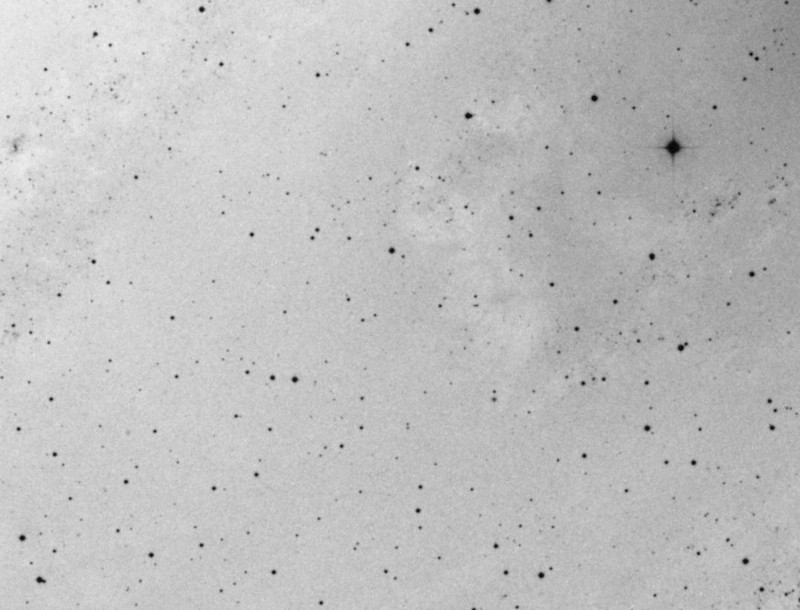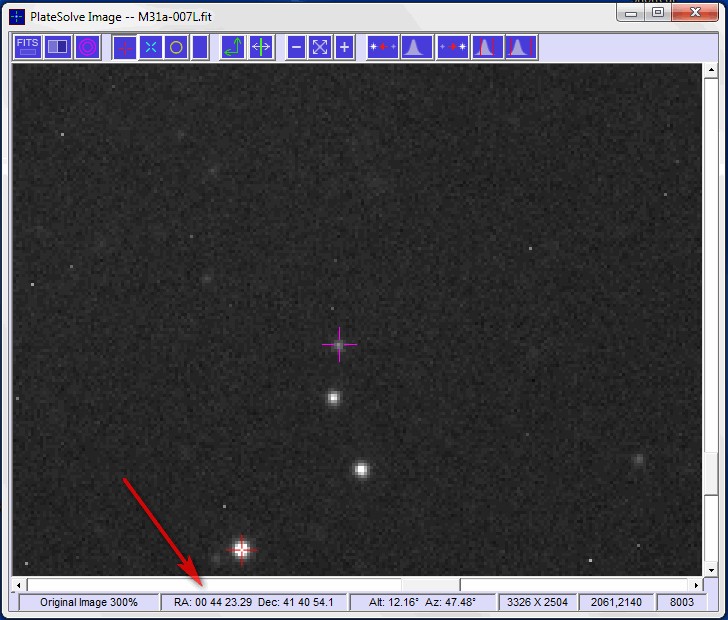19th January
M31 Andromeda galaxyThe sixth pane (at the left) is proving difficult to get due to our poor weather.
I could only get 12x10 minutes.
There is a bit of brightness missmatch, but the huge size of M31 is revealing itself.
(See this link for a tutorial on making mosaics).

25th January
A supernova in M82 was reported on the night of Tuesday 21st January by tutor Dr Steve Fossey and his students,
of University College London, when they imaged the galaxy from the university’s teaching observatory at Mill Hill, north London.
Cloudy conditions meant that my first chance to image it was on the 25th.
This is 9 x 5 minutes, luminance filter.

| I took a series with the photometric V filter and
using reference star magnitudes from AAVSO calculated the magnitude of the supernova: |
 |
|
| My values are in
red. |
 |
Nova in M31
While examining the program Registar which I have been using to make mosaics, I realised that
its ability to accurately register stars in two images would make it useful as a blink comparator for
searching for asteroids, comets and novae.
I compared a DSS image of M31 with an image I took on 23rd November 2013, and almost immediately
a new star popped out.
This animation shows it:

Had I discovered my first Nova?
I put the original FITS image into Platesolve2 and determined the coordinates of the mystery object.

The coordinates were RA = 00 44 23.29, DEC 41 40 54.1
Before I alerted the World to my discovery, I thought I had better see if anyone else had seen it.
I Googled 'Nova in M31' which led me to this page: http://www.rochesterastronomy.org/novae.html
There have been several novae in M31 recently and the 10th one in the list was mine!
Unfortunately it had been spotted on the 3rd November 2013 by the Palomar Transient Factory.
Oh well, only 20 days too late.
This is the entry:
 |
Nova M31 2013-11a? (= iPTF13dya), ATEL 5539 discovered 2013/11/03.250 by Palomar Transient Factory found in M31 at R.A. = 00h44m23s.29, Decl. = +41°40'54".6 Located 1112".2 east and 1486".1 north of the center of M31 (Koichi Nishiyama image) Mag 19.2:1/5 (17.5:11/3), Type unknown (References: ATEL 5569, ATEL 5744) |
25th January
The HorseHead Nebula in Orion is ideally placed in the South.
I have taken 10 minute images before, but this exercise was to see what 20 minute exposures would produce.
4 x 20 minutes in Ha

28th January
A different type of astrophotography... Usually the objects imaged are millions of
miles away, but this one is sitting right on my desk.
I have always wanted to own a meteorite so when one came up on Astro Buy and Sell I had to get it,
It is a Campo Del Cielo meteorite, mass 2395 grams. Mostly iron so it is very dense.
About 4000 to 5000 years ago a large meteor exploded in the air over Argentina, scattering fragments over a wide area.
The largest piece is 37 tonnes making it the second largest single piece meteorite discovered.
In 1576 the first piece was detected, although the natives of the area had known about the
day that 'a piece of the Sun had fallen from the sky'.
Single image, no darks or flats.
